The Google Nexus 9 Review
by Joshua Ho & Ryan Smith on February 4, 2015 8:00 AM EST- Posted in
- Tablets
- HTC
- Project Denver
- Android
- Mobile
- NVIDIA
- Nexus 9
- Lollipop
- Android 5.0
Software
With the Nexus 9, Google has released the biggest upgrade to Android since 4.0. In some ways, Android 5.0 represents one of the biggest shifts in the design of the OS ever. While we’ve had JIT compiling on Dalvik since Android 2.2, this has remained largely static for the past few years during Android’s monumental growth. With Android 5.0, we see the introduction of Android Runtime, or ART. Instead of trying to compile the application right before execution, ART does most of the compilation well before the application is launched. This incurs higher storage requirements, longer app-install times, and longer first-boot times, but with great benefits to performance. Google has done a great deal of work in general to try and resolve performance issues, as we first detailed in our coverage on ART.
While performance is one major aspect of Android 5.0, Google has also fundamentally redesigned the interface. To replace Holo, Google has introduced Material Design, which emphasizes depth, physics, animation, and a new palette of colors. While it would be great to go over all of these aspects of the Nexus 9, it’s best to refer to Brandon's review of Android 5.0 Lollipop for these issues. Instead, for this review I will mostly focus on the Lollipop experience specific to the Nexus 9. This means that the focus will be on performance of the device in general usage, along with the app ecosystem for Android tablets.
Unfortunately, these seem to be sore points of the Nexus 9 and the broader Android tablet ecosystem. Without question, if we’re talking about tablet applications they definitely do exist for the Nexus 9. The problem is that there is a pervasive lack of applications that are truly designed for a 9 inch, 4:3 aspect ratio display. Applications like Twitter, Facebook, and other first-party apps are simply blown up versions of the phone application. There is some level of extra content presented, but a lot of applications just don’t scale correctly which wastes a lot of real estate on the display. While we found issue with the Nexus 6’s lack of phablet-specific layouts, this is an even bigger issue on the Nexus 9.
While it’s possible to point fingers at app developers for not supporting Android properly, Google seems to have these problems as well. The settings interface is a single large pane of options, instead of a dual-pane interface that allows for simultaneous navigation of the overall settings and individual settings. The Play Store application is mostly similar in this respect, and the YouTube app is possibly the worst example of these kinds of issues. For example, while there is a tablet-specific video view in landscape, most navigation, search, and video selection is identical to what we see on a smartphone.
Nothing really takes advantage of the screen size other than simply being bigger than before. There aren’t any multi-window modes that exploit the larger screen size, and in general the Nexus 9 doesn’t introduce any new functionality that clearly justifies the need for a bag/backpack to carry it. There are applications that take advantage of the larger display, but these are rare. For the most part though, this is effectively true for most tablets other than the Surface Pro 3 which is effectively in a different category altogether.
On the performance side, the story is better but it isn’t perfect either. Similar to Brandon’s experience with the Nexus 6, I often saw random stutters on animations such as the app drawer or while opening an application. It’s hard to say what the cause is at this point, as the Nexus 6 seems to have similar issues with lag even though the Nexus 5 has none of these issues. One might point to FDE causing worse performance, but even that isn’t quite accurate as a build of Lollipop with FDE disabled didn’t do all that much in the way of solving these problems. Overall though, the experience is somehow less performant than the SHIELD Tablet on Android 5.0, even if these issues mostly present themselves in the form of minor frame drops from time to time. I also noticed that there was a distinct lack of available memory over time, which suggests a memory leak as on reboot launcher redraws effectively disappeared.
While these are significant issues that need to be resolved, the experience isn’t actually as bad as it seems. For what it’s worth, Material Design is a great new design scheme to replace the somewhat dated Holo UI that has been in use since Honeycomb/Android 3.0. While there are issues with the tablet experience, if one is willing to look past these issues they will find that the Nexus 9 is a respectable software experience. There’s also the potential for the Nexus 9 to spur improved tablet experiences, although this would be a slow change that could take years to be meaningful.


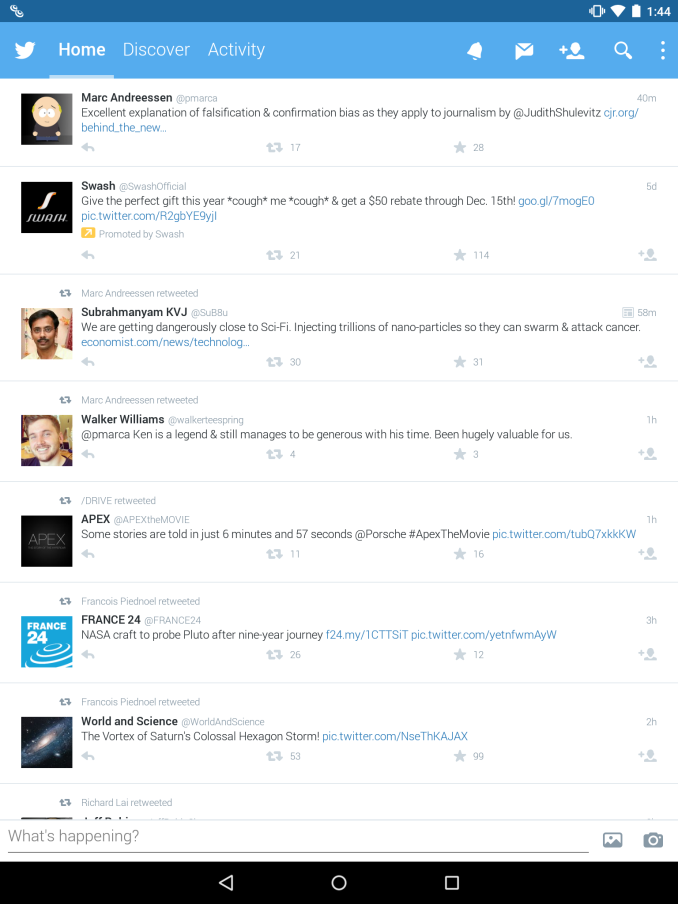
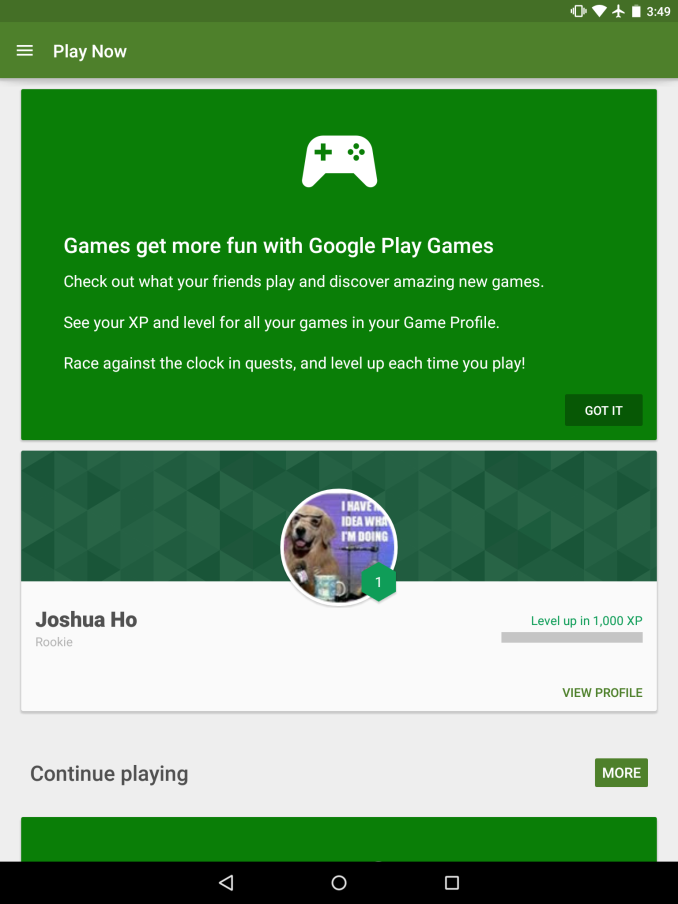
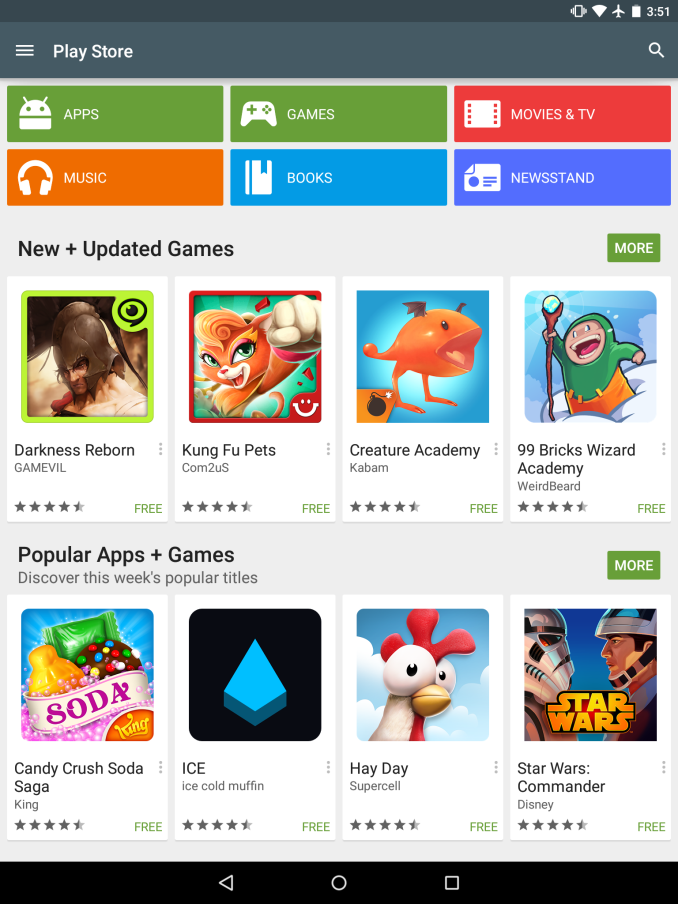
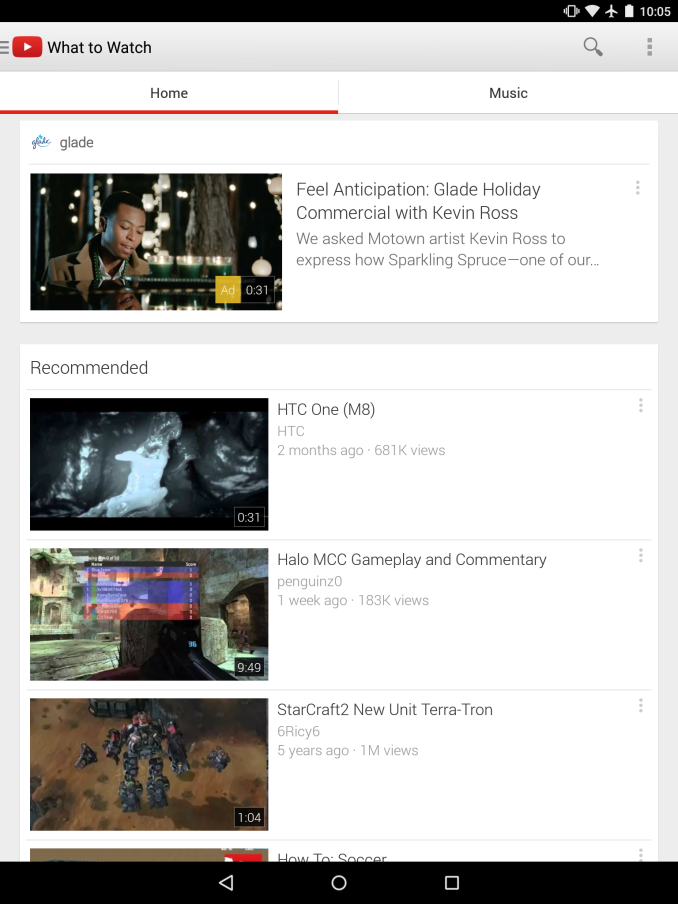
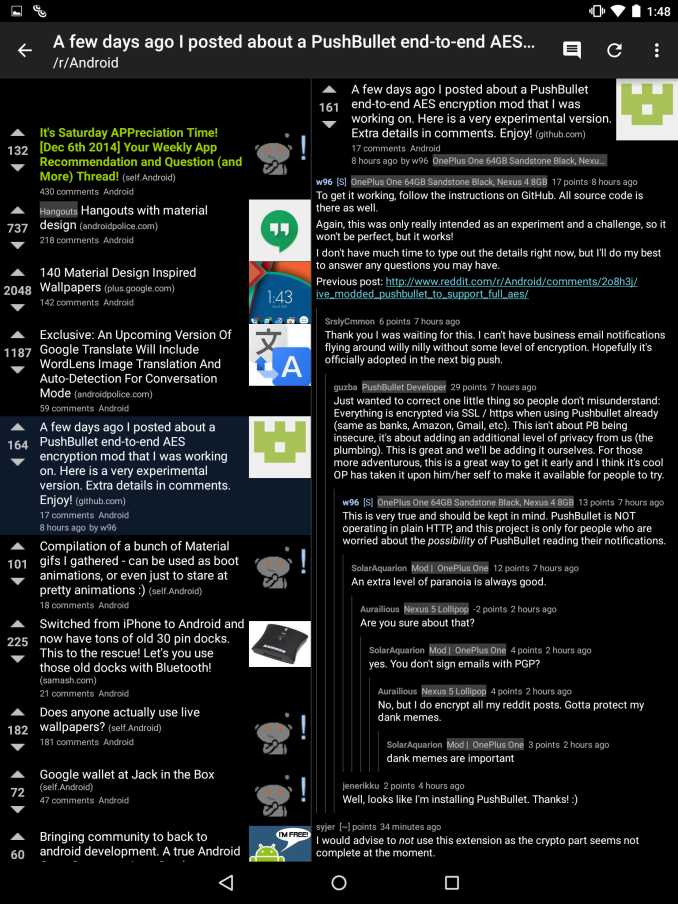








169 Comments
View All Comments
dtgoodwin - Wednesday, February 4, 2015 - link
I really appreciate the depth that this article has, however, I wonder if it would have been better to separate the in depth CPU analysis for a separate article. I will probably never remember to come back to the Nexus 9 review if I want to remember a specific detail about that CPU.nevertell - Wednesday, February 4, 2015 - link
Has nVidia exposed that they would provide a static version of the DCO so that app developers would be able to optimize their binaries at compile time ? Or do these optimizations rely on the program state when they are being executed ? From a pure academic point of view, it would be interesting to see the overhead introduced by the DCO when comparing previously optimized code without the DCO running and running the SoC as was intended.Impulses - Wednesday, February 4, 2015 - link
Nice in depth review as always, came a little late for me (I purchased one to gift it, which I ironically haven't done since the birthday is this month) but didn't really change much as far as my decision so it's all good...I think the last remark nails it, had the price point being just a little lower most of the minor QC issues wouldn't have been blown up...
I don't know if $300 for 16GB was feasible (pretty much the price point of the smaller Shield), but $350 certainly was and Amazon was selling it for that much all thru Nov-Dec which is bizarre since Google never discounted it themselves.
I think they should've just done a single $350-400 32GB SKU, saved themselves a lot of trouble and people would've applauded the move (and probably whined for a 64GB but you can't please everyone). Or a combo deal with the keyboard, which HTC was selling at 50% at one point anyway.
Impulses - Wednesday, February 4, 2015 - link
No keyboard review btw?JoshHo - Thursday, February 5, 2015 - link
We did not receive the keyboard folio for review.treecats - Wednesday, February 4, 2015 - link
Where is the comparison to NEXUS 10????Maybe because Nexus 10's battery life is crap after 1 year of use!!!
Please come back review it again when you used it for a year.
treecats - Wednesday, February 4, 2015 - link
My previously holds true for all the Nexus device line I own.I had Nexus 4,
currently have Nexus 5, and Nexus 10. All the Nexus devices I own have bad battery life after 1 year of use.
Google, fix the battery problem.
blzd - Friday, February 6, 2015 - link
That tells me you are mistreating your batteries. You think it's coincidence that it's happening to all your devices? Do you know how easy it is for batteries to degrade when over heating? Do you know every battery is rated for a certain number of charges only?Mostly you want to avoid heat, especially while charging. Gaming while charging? That's killing the battery. GPS navigation while charging? Again, degrading the battery.
Each time you discharge and charge the battery you are using one of it's charge cycles. So if you use the device a lot and charge it multiple times a day you will notice degradation after a year. This is not unique to Google devices.
grave00 - Sunday, February 8, 2015 - link
I don't think you have the latest info on how battery charging vs battery life works.hstewartanand - Wednesday, February 4, 2015 - link
Even though I personal have 6 tablets ( 2 iPads, 2 Windows 8.1 and 2 android ) and as developer I find them technically inferior to Actual PC - except for Windows 8.1 Surface Pro.I recently purchase an Lenovo y50 with i7 4700 - because I desired AVX 2 video processing. To me ARM based platforms will never replace PC devices for certain applications - like Video processing and 3d graphics work.
I am big fan of Nvidia GPU's but don't care much for ARM cpus - I do like the completion that it given to Intel to produce low power CPU's for this market
What I really like to see is a true technical bench mark that compare the true power of cpus from ARM and Intel and rank them. This includes using extended instructions like AVX 2 on Intel cpus.
Compared this with equivalent configured Nvidia GPU on Intel CPU - and I would say ARM has a very long way to go.
But a lot depends on what you doing with the device. I am currently typing this on a 4+ year old Macbook Air - because it easy to do it and convenient. My other Windows 8.1 ( Lenovo 2 Mix 8 - Intel Adam Baytrail ) has roughly the same speed - but Macbook AIR is more convenient. My primary tablet is the Apple Mini with Retina screen, it is also convent for email and amazon and small stuff.
The problem with some of bench marks - is that they maybe optimized for one platform more than another and dependent on OS components which may very between OS environments. So ideal the tests need to native compile for cpu / gpu combination and take advantage of hardware. I don't believe such a benchmark exists. Probably the best way to do this get developers interested in platforms to come up with contest for best score and have code open source - so no cheating. It would be interesting to see ranking of machines from tablets, phones, laptop and even high performance xeon machines. I also have an 8+ Year old dual Xeon 5160 Nvidia GTX 640 (best I can get on this old machine ) and I would bet it will blow away any of this ARM based tablets. Performance wise it a little less but close to my Lenovo y50 - if not doing VIDEO processing because of AVX 2 is such significant improvement.
In summary it really hard to compare performance of ARM vs Intel machines. But this review had some technical information that brought me back to my older days when writing assembly code on OS - PC-MOS/386